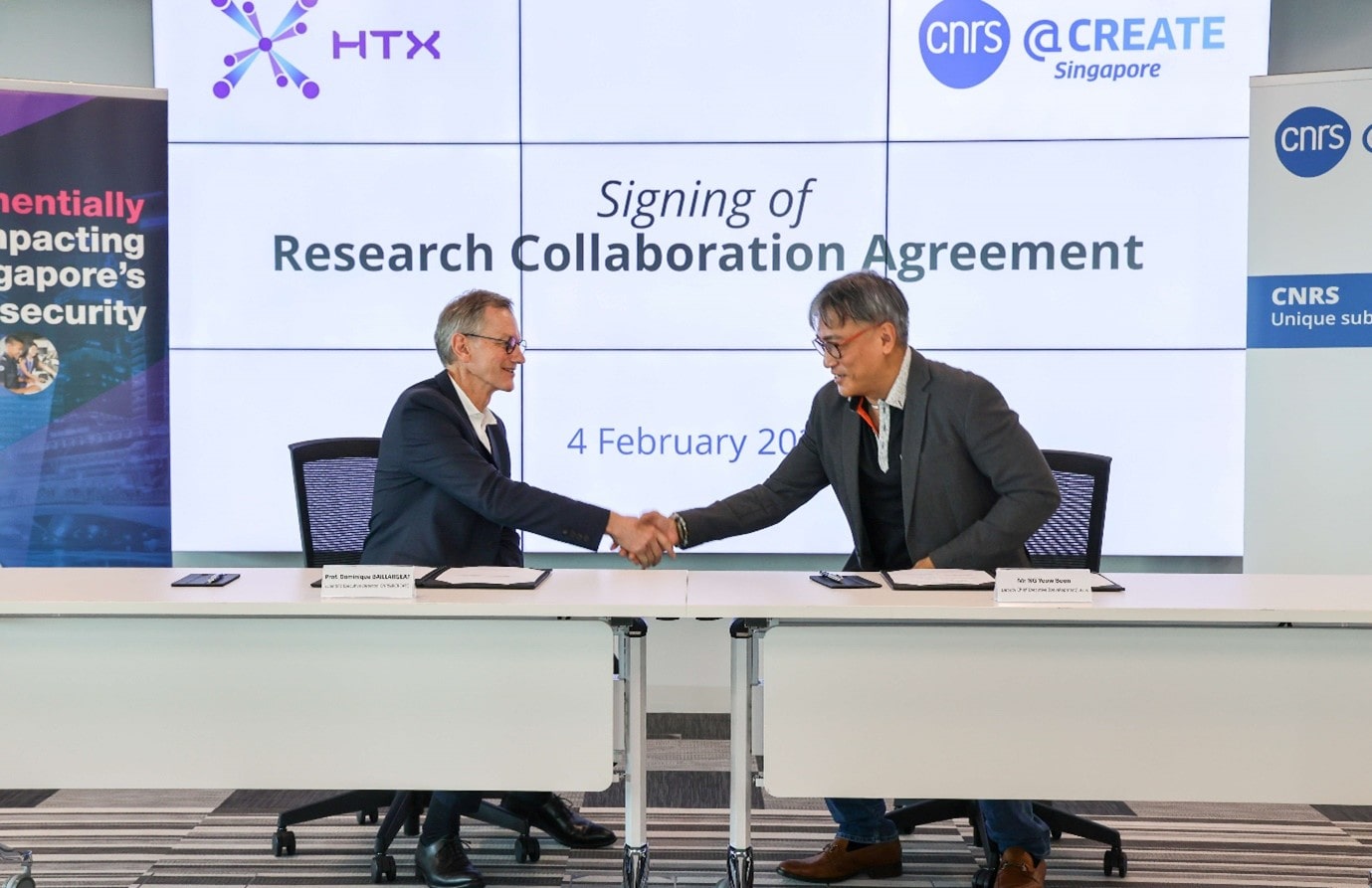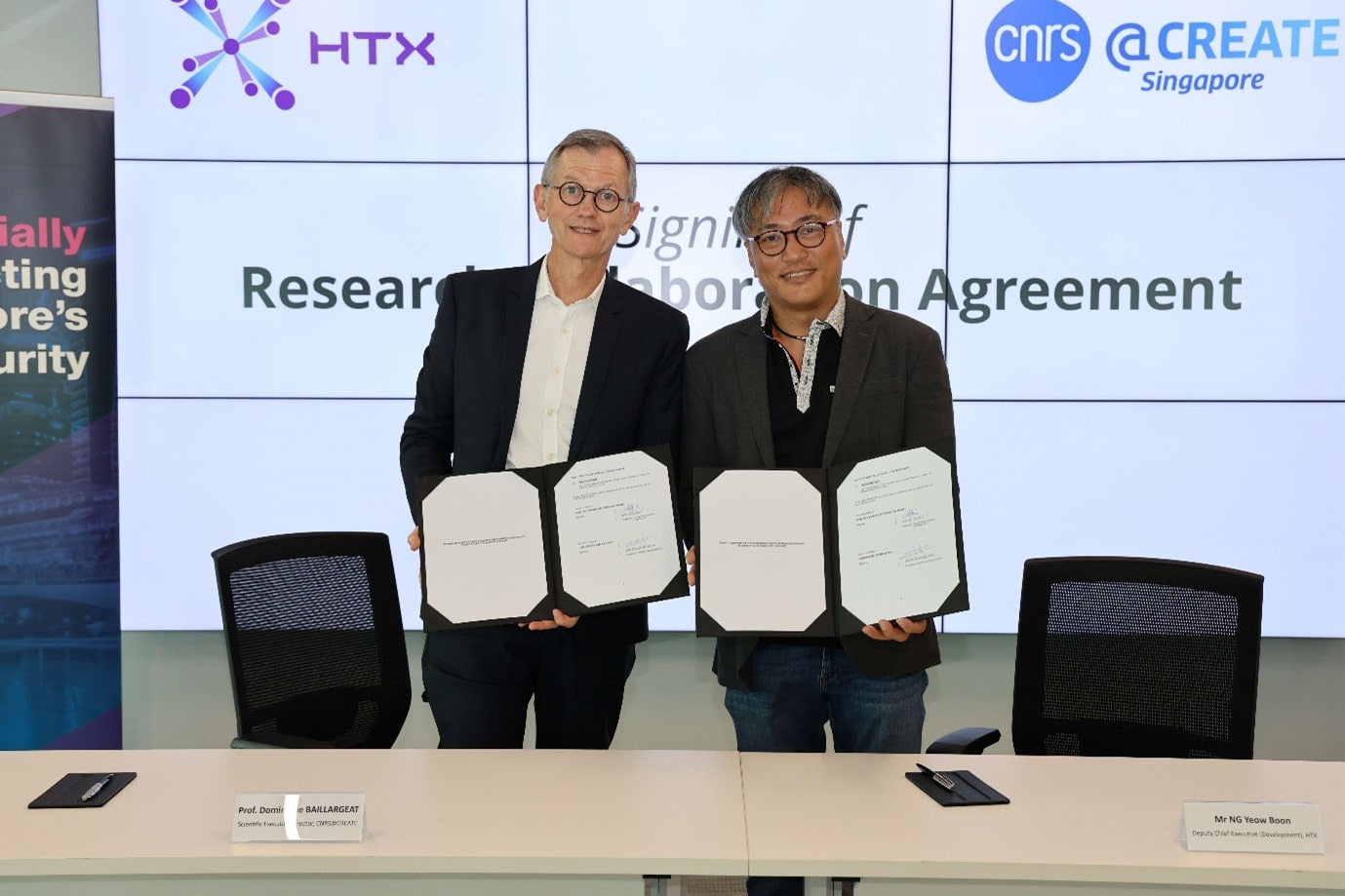 Professor Dominique Baillargeat, CEO, CNRS@CREATE (left) shakes hands with Ng Yeow Boon, Deputy Chief Executive (Development), HTX (right) after signing the research collaboration agreement (Photo: HTX)
Professor Dominique Baillargeat, CEO, CNRS@CREATE (left) shakes hands with Ng Yeow Boon, Deputy Chief Executive (Development), HTX (right) after signing the research collaboration agreement (Photo: HTX)
HTX signed a research agreement with CNRS@CREATE on 4 February 2025 that would allow the former to enhance its ability to better predict and respond to potential threats such as chemical accidents with the use of artificial intelligence (AI).
According to the agreement, HTX and CNRS@CREATE, which is the Singapore subsidiary of France’s National Centre for Scientific Research (CNRS), will collaborate on advanced modelling and simulation tools for Singapore’s tropical urban
environment. Both parties will develop an advanced data-driven model of the Singapore environment as well as Chemical, Biological, and Radiological (CBR) sensor model fusion technology.
“I am very excited as this is the first seed
of the collaboration, and more importantly, the start of a very long-term relationship, and hopefully, a very strong friendship,” shared Ng Yeow Boon, the Deputy Chief Executive (Development) of HTX.
When complete, this advanced model
will allow the Home Team to accurately predict locations at risk of exposure to toxic plumes released by industrial accidents. The advanced model of the Singapore environment will be powered by CNRS@CREATE’s DesCartes project, which was supported
by National Research Foundation Singapore under its CREATE programme.
The DesCartes project is a hybrid artificial intelligence (AI) platform which enables optimised decision-making in complex situations through the integration of AI with
physical knowledge of the real world.
HTX will deploy a three-dimensional wind Lidar instrument to collect precise and comprehensive wind measurement data to validate DesCartes’ environmental simulations. The validation will evaluate the simulation accuracy in Singapore’s
complex urban, tropical island climate.
 Professor Baillargeat and DCE(D) Ng with the signed agreement. (Photo: HTX)
Professor Baillargeat and DCE(D) Ng with the signed agreement. (Photo: HTX)
With this simulation engine, the Home Team will be able to use the surrogate model to quickly simulate urban dispersion scenarios while maintaining accuracy. This will enhance their ability to predict and respond to potential threats, such as chemical
accidents, in a timely manner. The advanced modelling capabilities will also support strategic planning and decision-making.
“By leveraging cutting-edge technology and fostering international collaboration, we are enhancing our simulation
capability and paving the way for innovative solutions,” explained May Ong, Director of HTX’s Chemical, Biological, Radiological, Nuclear, and Explosives (CBRNE) Centre of Expertise.
“I expect this collaboration with CNRS@CREATE on advanced urban modelling and simulation to enable HTX and the Home Team to perform fast and accurate simulations of various urban scenarios, ensuring the
safety and security of our community,” she added.
Founded in 1939, CNRS is the largest fundamental research organisation in Europe. Hosted at Singapore’s Campus for Research Excellence and Technological Enterprise (CREATE),
CNRS@CREATE is CNRS’ first overseas subsidiary.

